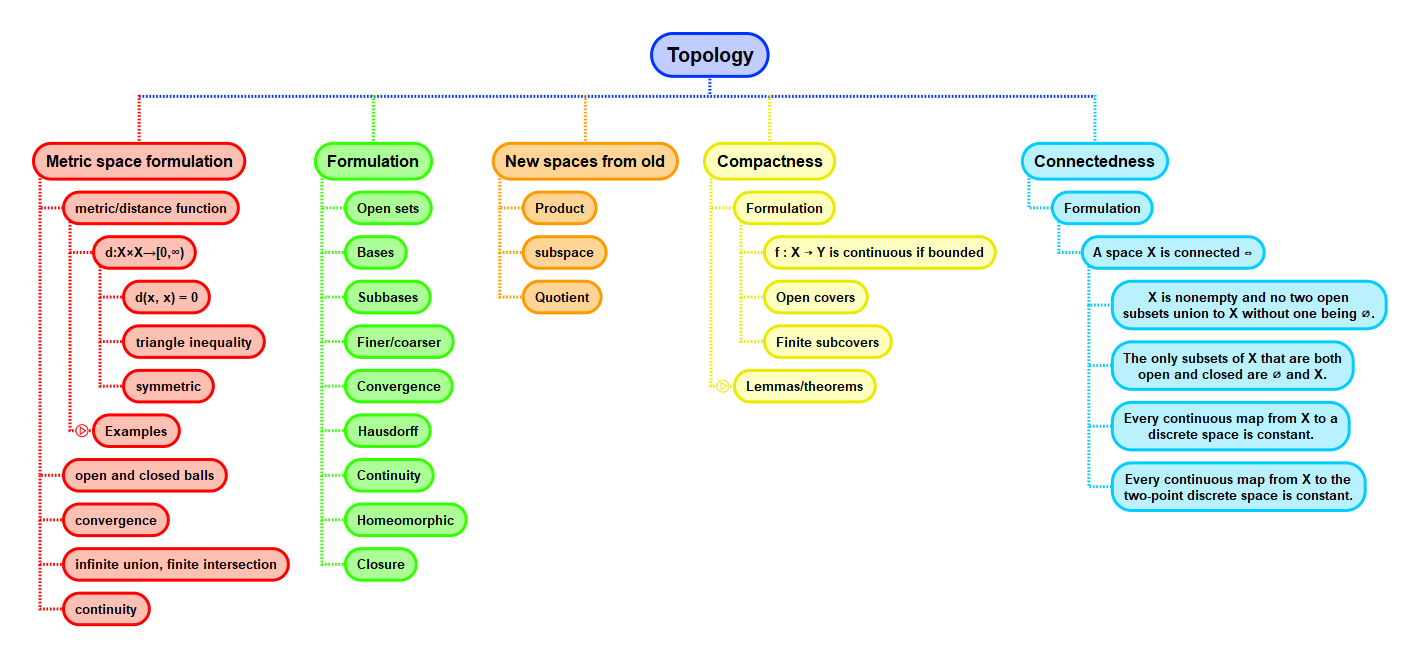Basis
Instead of specifying all possible open sets of a topology, it is convenient to be able to specify the topology in terms of a smaller set. Analogously, for metric spaces, the set of open balls could be used to describe a metric space instead of directly specifying the arbitrary open sets. For topological spaces, a basis carries out this role (plural: bases).
Basis, definition
Let \( X \) be a topological space. A basis for \( X \) is a collection \( \mathscr{B} \) of open subsets of \( X \) such that every open subset of \( X \) is a union of sets in \( \mathscr{B} \).
Two consequence of this definition are:
- Every element of \( X \) has at least one neighbourhood that is a basis element.
- the intersection of any two basis elements must be a basis element.
A bit more formally, these two consequences translate to:
Lemma.
Let \( X \) be a topological space, and let \( \mathscr{B} \) be a basis for \( X \). Then:
- For each \( x \in X \), there is at least one basis element \( B \) containing \( x \).
- If \( x \in B_1 \cap B_2 \) where \( B_1 \) and \( B_2 \) are basis elements, then \( x \in B_3 \) for some basis element \( B_3 \subseteq B_1 \cap B_2 \).
The choice of definition and lemma
The wording of this lemma is presented in line with Munkres's presentation. Munkres, however, presents this lemma as the definition of a basis; he then proceeds to derive the content of the definition that I've presented above. Leinster proceeds in the opposite order, as presented here. I think that the motivation of a basis is clearer from Leinster's definition, whereas the lemma presented by Leinster (definition for Munkres) is more useful to work with. I followed Munkres's wording for the lemma as I feel it encourages thinking in terms of individual elements of \( X \) which so far has been useful in proofs.
Context

